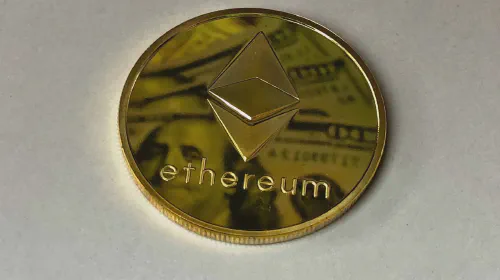Impact of Non-Fungible Tokens (NFTs) on the Economy - Insights and Analysis
Salomon Kisters
Sep 19, 2022This post may contain affiliate links. If you use these links to buy something we may earn a commission. Thanks!
Non-fungible tokens are a relatively new form of digital assets, having only recently entered the market.
Nevertheless, they are already helping to create new forms of funding and investment. Blockchain technology is at the heart of NFT ecosystems, providing participants with trust and uniqueness.
In addition, NFTs have implications in almost all industries.
Let’s find out what impact NFTs have on the economy and what role they are expected to play in our economic future.
Economic Opportunities
With the rise of blockchain and cryptocurrency, the NFT market has suddenly gained popularity. Various luxury brands, including Louis Vuitton and D&G, have launched their own marketplaces that sell NFTs. Some others, including Prada and Bulgari, are now testing the waters and exploring new opportunities in this market.
In addition to creating a new form of currency, NFTs can also be used as digital keys for online spaces. This allows for direct communication between token holders and brands.
For example, NFTs can function like membership cards or tickets that allow the holders to get access to exclusive merchandise and special discounts. And with the growing number of decentralized financial applications based on blockchains, NFTs can even be used to make loans without the need for trusted intermediaries.
NFTs can also be used to purchase non-portable pieces of art. For example, an artist known as “PANT1” in the graffiti world, released a “Graffiti Collection” on Nifty Gateway in exchange for NFTs. This creates a new, non-portable market for artists who wish to market their art.
Many artists are releasing artwork collections on the blockchain, enabling them to sell them to more people for more money. In addition, NFTs allow artists to divide their work into smaller pieces, allowing each person to own one unit.
The downside to this new development, however, is that many of the NFTs for sale are still too expensive for the average person.
Markets
The NFT space is undergoing a major transformation. Instead of being just another investment vehicle, it is quickly becoming a commodity with real value.
Several big brands have already begun using NFTs in their marketing campaigns. For example, Taco Bell started selling NFT Taco GIFs, while Pringles introduced the CryptoCrisp flavor. There is an unlimited number of marketing possibilities available with NFTs.
NFTs are also changing the way we own digital content today. Users can now purchase video clips, tattoos, and other digital designs using NFTs. In the near future, this technology will revolutionize the way we consume entertainment and create new business models.
Investments
Non-Fungible Tokens (NFTs) are digital assets that can only be purchased with a particular currency, such as Ethereum. The most common NFTs are digital works of art. Some artists sell their NFTs for hundreds of thousands of dollars, and even celebrities are getting into the action. For instance, Jimmy Fallon has an NFT that is valued at more than $200,000.
In addition to being used in digital business processes, NFTs can also be used to declare ownership rights for physical goods. This will make them more tradable and create new investment opportunities. The economic impact of NFTs will continue to expand as the digital platform economy matures.
For example, the social media giant Facebook would have been more successful if users could buy a stake in the company. This would have created hundreds of thousands of new businesses that would not have otherwise had to pay for Facebook ads.
The Impact on the Financial System
NFTs could have a profound impact on the global financial system. It could help build a more sustainable financial system and increase opportunities for people formerly excluded from the system.
Furthermore, they could speed up the transition to a sustainable green economy. The use of NFTs could even make trading carbon credits and environmental assets possible in the future.
The financial industry has undergone an unprecedented transformation in recent years. The rise of neo banks, the digitalization of banking, and the advent of cryptocurrency have all contributed to the growth of this sector.
Today, cryptocurrency is the hottest asset in finance. New digital assets like NFT are also taking off. The word “NFT” has even earned the title of word of the year by the British Collins dictionary, a testament to its growing popularity. However, it still remains to be seen how this new technology will impact the global financial system.
NFTs have the potential to revolutionize global commerce and trade finance. With their decentralized nature, they can be used to tokenize a wide variety of assets, including real-world currencies and digital assets. The use of NFTs also enables trade finance instruments to move securely along a blockchain, facilitating seamless settlement and increased liquidity.
They also feature smart contracts that can perform most financial roles, including the role of custodians. They are designed to eliminate intermediaries, reduce counterparty risk, and preserve the integrity of deliverables.
While NFTs improve the ability of financial institutions to serve customers, they also improve interoperability within the system. With APIs that allow users to connect to other platforms, these innovations can make it easier for users to perform transactions and deals. This translates into lower costs for end users and greater competition.
Rarity Systems
The prevailing valuation input in NFTs is scarcity. When things are scarce, their value is in proportion to their demand. For example, the rarest elements can be worth $1BN per gram in theory but are only sold in trace amounts. Thus, the economy is subject to the laws of supply and demand.
As a result, we see that traders tend to buy and sell assets within a particular collection. This framework reflects the way that a network is structured. In the case of NFTs, traders typically buy NFTs from each other and then sell them to other traders who specialize in the same type of collection.
The value of the NFT market is highly correlated with the price of cryptocurrencies. It is, therefore, possible that the price of an NFT can fall dramatically if the price of an underlying cryptocurrency falls.
While the NFT market is prone to speculation, a close analysis of the market will reveal that a higher value is associated with higher-quality NFTs.
The economic potential of NFTs has been widely recognized in several industries, including fashion. Burberry, for example, has created exclusive NFT accessories for the Blankos Block Party video game, while Nike has released limited-edition NFT sneakers in the metaverse. As a result, the NFT economy has generated millions of dollars in sales.
Opportunities for Artists
One way to increase the visibility of your work at NFTs is by showcasing it in public areas. Most organizations use paintings as the main attraction for employees and visitors.
Paintings have a similar appeal to digital art and are highly popular for corporate displays. Almost 76% of respondents purchase paintings or photographs for their offices or business spaces.
Photography and video art were also popular among respondents.
Artists can also use NFTs to create community-building opportunities. These spaces provide artists with direct connections with collectors and give them a platform to establish a brand.
Many people buy NFT art because of its authenticity, while others purchase it to develop a personal relationship with its creators. These communities are often found on Discord and encourage artists to connect with their audience to establish a personal brand.
Among the many benefits of NFTs for artists is the availability of a decentralized marketplace. Artists can sell their work directly to consumers, bypassing middlemen and save resources and time. In addition to this, these platforms also help artists connect with new audiences and build their support base.
Business Models
The growing popularity of NFTs has led to a variety of new business models. These models can range from monetizing in-game assets to creating virtual stores. One example is the development of a virtual bookstore.
The idea is that users would be able to purchase virtual items using their NFTs. Another business model involves charging transaction fees for virtual items.
NFTs can be used for a variety of purposes, but their real value lies in the unique ways that businesses are using them. For example, football has recently tapped into NFTS, with the NFL recently announcing that it will compile video highlights into NFTs that can be sold to fans as digital collectibles.
Conclusion
The emergence of NFTs has generated a lot of hype; NFTs have the potential to have an enormous impact on the economy. As more people use them, we’ll be able to see the full potential of these revolutionary technologies.
NFTs are the next big thing in digital ownership. These new assets are unique and secure, and they are transforming the digital ownership landscape. They are opening up whole new digital ecosystems and marketplaces. The potential is staggering!
If you are looking to turn your digital collections into NFTs, we offer full-stack blockchain solutions, advisory, and consultancy to take your project to the next level. Contact us today to talk about how we can he
Stay informed with the latest insights in Crypto, Blockchain, and Cyber-Security! Subscribe to our newsletter now to receive exclusive updates, expert analyses, and current developments directly to your inbox. Don't miss the opportunity to expand your knowledge and stay up-to-date.
Love what you're reading? Subscribe for top stories in Crypto, Blockchain, and Cyber-Security. Stay informed with exclusive updates.
Please note that the Content may have been generated with the Help of AI. The editorial content of OriginStamp AG does not constitute a recommendation for investment or purchase advice. In principle, an investment can also lead to a total loss. Therefore, please seek advice before making an investment decision.

7 Reasons Why Ethereum Is Different From Bitcoin
In this article, we’ll look at the differences between Ethereum and Bitcoin and see where Ethereum improved upon its blockchain technology by learning from its predecessor.

Are Nfts Bad for the Environment?
Energy consumption is the main issue that people have with cryptocurrencies and NFTs. But how bad are NFTs for the environment after all?

Are Nfts Good or Bad for Artists and Musicians?
NFTs have generated much hype over the last couple of years. But are they good or bad for artists and musicians?
Protect your documents
Your gateway to unforgeable data. Imprint the authenticity of your information with our blockchain timestamp